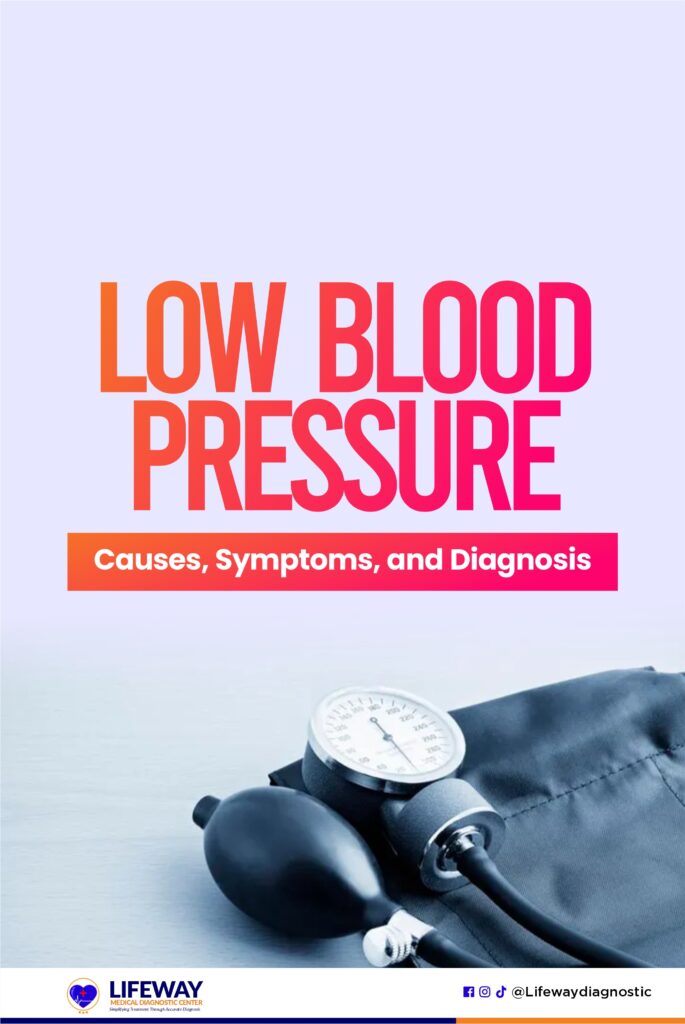Low blood pressure, or hypotension, is when blood pressure falls below the normal range. There are several causes of low blood pressure.

While low blood pressure is generally considered healthier than high blood pressure, it can sometimes indicate an underlying medical issue that requires attention.
In this post, we’ll dive into the symptoms, diagnosis, and causes of low blood pressure to help you better understand this common, but often misunderstood condition.
What is Low Blood Pressure?
Blood pressure is typically measured in two numbers – the systolic pressure (top number) and the diastolic pressure (bottom number). Normal blood pressure is generally considered to be less than 120/80 mmHg.
Low blood pressure is defined as a systolic blood pressure reading of less than 90 mmHg or a diastolic reading of less than 60 mmHg. However, some individuals may naturally have lower blood pressure and still be considered healthy.
Causes of Low Blood Pressure
Several things lead to this, including:
a. Dehydration:
Losing too much fluid from the body, whether through excessive sweating, diarrhea, or vomiting, can lead to dehydration and lower blood pressure in the body.
b. Medication Side Effects:
Certain medications, such as diuretics, antidepressants, and blood pressure-lowering drugs, can cause low blood pressure as a side effect.
c. Pregnancy:
It is common during pregnancy, especially in the first trimester, as the body produces more blood to support the developing fetus.
d. Cardiac Conditions:
Certain heart conditions, like heart valve problems or an abnormally low heart rate (bradycardia), can reduce the heart’s ability to pump blood effectively, resulting in low blood pressure.
e. Endocrine Disorders:
Conditions affecting the endocrine system, such as adrenal insufficiency or an underactive thyroid (hypothyroidism), can disrupt the body’s ability to regulate blood.
f. Neurological Conditions:
Diseases or injuries affecting the nervous system, like Parkinson’s disease or spinal cord injuries, can interfere with the body’s blood pressure regulation.
g. Anemia:
Low levels of red blood cells or hemoglobin (anemia) can reduce the oxygen-carrying capacity of the blood, leading to low blood pressure.
Symptoms of Low Blood Pressure
The symptoms can vary depending on the underlying cause and the severity of the condition. Some common symptoms include:
- Dizziness or lightheadedness
- Fainting or feeling faint
- Blurred vision
- Nausea
- Fatigue
- Difficulty concentrating
- Pale, cold, or clammy skin
- Rapid, shallow breathing
Diagnosis of Low Blood Pressure
If you are experiencing symptoms of low blood pressure, it’s important to see a healthcare provider for a proper diagnosis.
They will likely start by taking your blood pressure measurements at rest and may also check your blood pressure while standing to identify any postural changes.
Depending on the suspected cause, your healthcare provider may also order additional tests, such as:
- Blood tests to check for anemia, thyroid disorders, or other underlying conditions
- Electrocardiogram (ECG) to assess heart function
- Echocardiogram to evaluate the structure and function of the heart
- Tilt table test to determine how your body responds to changes in position
Identifying the underlying cause is important for developing an effective treatment plan.
Conclusion
Don’t hesitate to speak with your healthcare provider if you’re concerned about your blood pressure.
By understanding the symptoms and causes of low blood pressure, you can take proactive steps to maintain your overall health and well-being.
